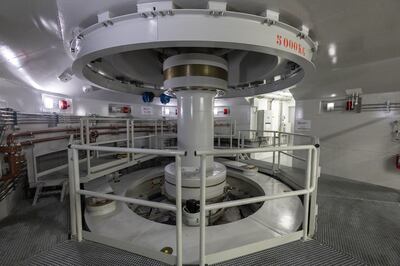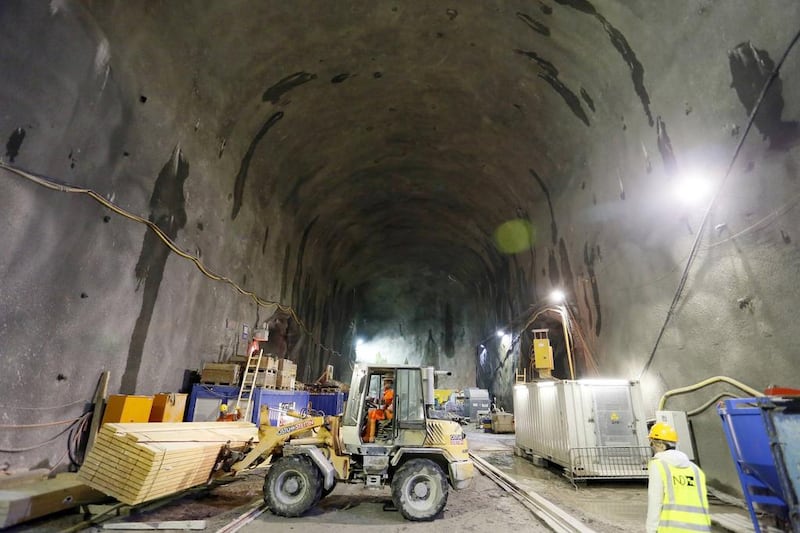Switzerland has added a much-needed cog to the wheel of Europe's energy supply with a new hydroelectric plant that stores and produces energy 600 metres beneath the Alps.
Developers of the $2.3 billion Nant de Drance plant, which came online in July, said it operates like a giant battery that can charge up 400,000 electric cars at once.
Its six turbines can regulate supply by either producing electricity from the Vieux Emosson reservoir or refilling the lake for later when there is a surplus of power.
The plant takes less than five minutes to switch from pump mode to turbine mode if other sources such as wind and nuclear are not generating enough power.
“In doing so, there are losses like any storage, but the yield is very good. We have about 80 per cent efficiency over the complete cycle,” director Alain Sauthier told Reuters on a tour this week.
The six turbines make Nant de Drance one of the most powerful pumped storage plants in Europe, roughly equivalent to a Swiss nuclear power plant.
At 360 cubic metres per second, the volume of water passing through its turbines corresponds to the summertime flow of the Rhone river through Geneva.
The plant, which has taken 14 years to build, will officially open next month.

“The amount of energy that can actually be stored in this facility is simply gigantic, about 20 gigawatt hours,” Mr Sauthier said. “This means that with a full tank in Vieux Emosson, you can recharge 400,000 electric car batteries simultaneously.”
Typically the plant pumps water into storage in the afternoon, at night and at weekends, then generates power in the morning and evening when prices are higher, he said.
“I would say it's not only important for Switzerland, it's also an important plant at European level because it will contribute to the stability of the network in Europe and to the security of supply in Europe,” he said.
Switzerland has long exploited its Alpine landscape to generate hydroelectricity at more than 600 plants, but is not immune from the wider European energy crisis caused by the war in Ukraine.
Russia used to provide 43 per cent of Switzerland's gas imports, mainly via Germany, but has slashed exports in what is seen by the European Union as a ploy to blackmail its members.
Although not a member of the EU, Switzerland is considering whether to align with the bloc's plan to cut its gas consumption by 15 per cent to make limited supplies go further.
It was recently suggested that the Swiss power grid might have to be switched off for four hours at a time in a worst-case scenario this winter.







